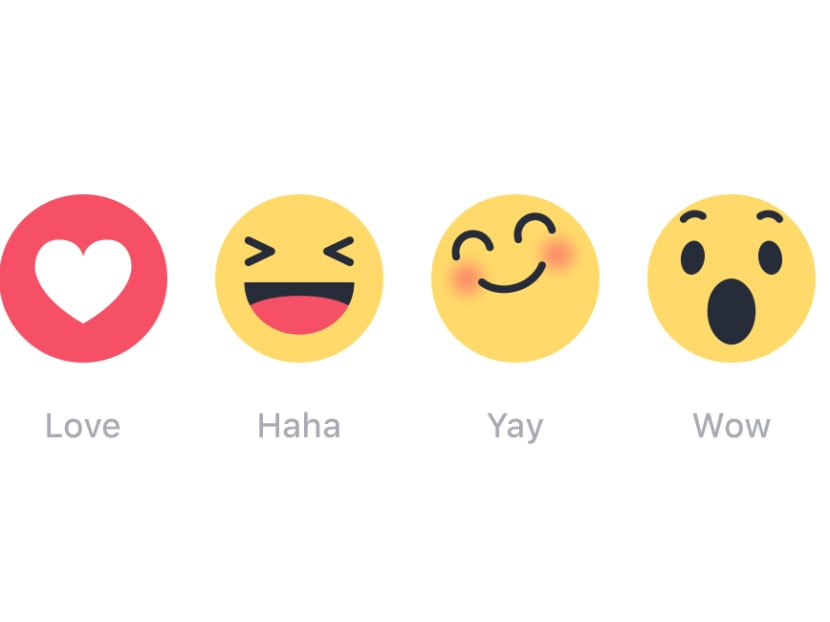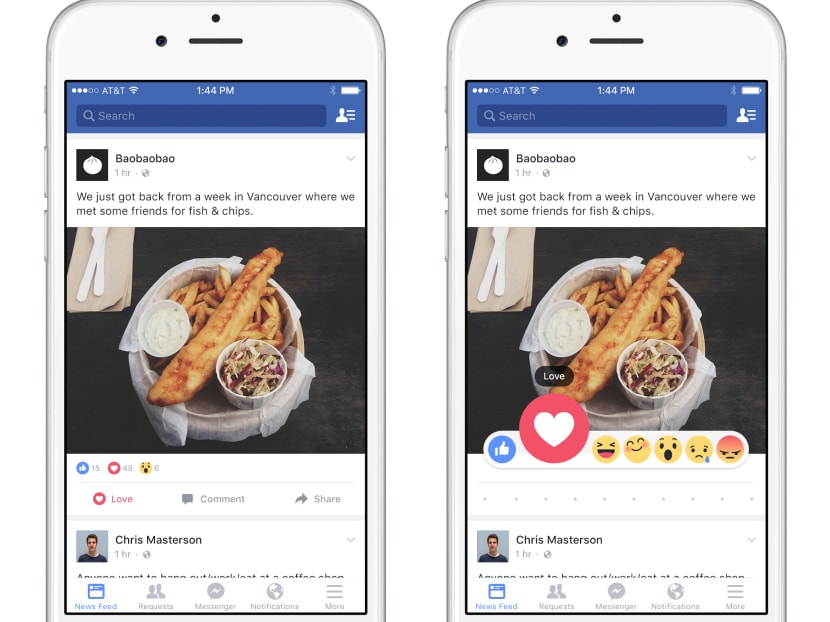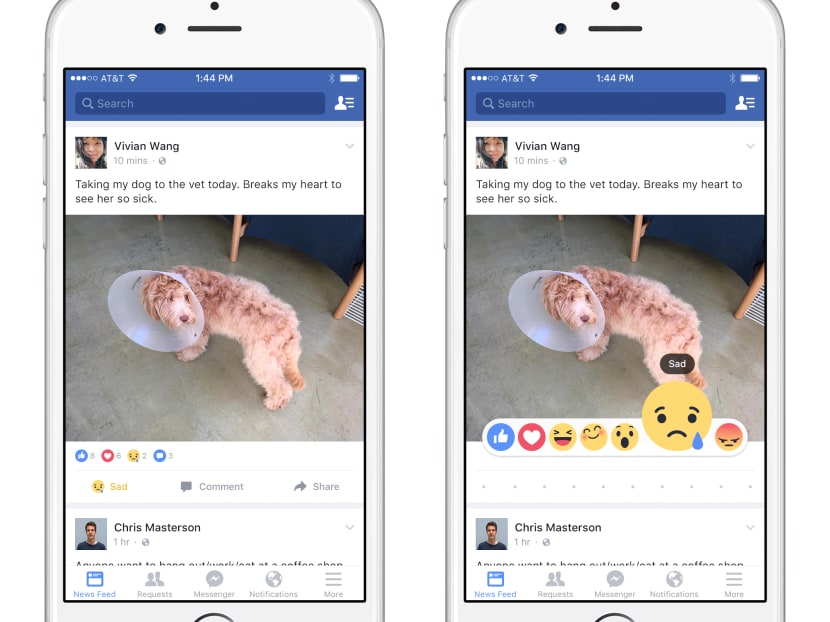The science behind Facebook’s new emoji
Mr Adam Mosseri has a very important job. As head of Facebook’s news feed, Mosseri and his team were assigned the task of determining which six cartoon images would accompany the social network’s ubiquitous thumbs-up button. They did not take the task lightly. To help choose the right emoji to join “like”, Mr Mosseri said Facebook consulted with several academic sociologists “about the range of human emotion”.



Mr Adam Mosseri has a very important job. As head of Facebook’s news feed, Mosseri and his team were assigned the task of determining which six cartoon images would accompany the social network’s ubiquitous thumbs-up button. They did not take the task lightly. To help choose the right emoji to join “like”, Mr Mosseri said Facebook consulted with several academic sociologists “about the range of human emotion”.
These were the results, which will begin rolling out to users in Spain and Ireland on Oct 8, and may eventually reach all 1.49 billion users:
The decision was reached after much deliberation. Arriving at the best of those trivial and common picture faces followed a lot of data crunching and outside help. Mr Mosseri combined the sociologists’ feedback with data showing what people do on Facebook, he said. The goal was to reduce the need for people to post a comment to express themselves.
“We wanted to make it easier,” he said. “When things are easier to do, they reach more people, and more people engage with them.”
This may sound like a lot of effort for a mission other companies conquered years ago. The set of emoji that Facebook settled on is similar to the reaction buttons that social network Path has been offering since 2012.
Apple software has hundreds of emoji. And Facebook already allows every user to comment with any emoji, digital sticker, or animated Gif they want to — an almost unlimited variety.
For this project, Mr Mosseri’s team categorised all those emoji, stickers, and keywords that people use in daily comments, posts, and mood updates.
They analysed the data, tallying the results to figure out which were the most popular.
“Hearts were everywhere,” Mr Mosseri said. “Sometimes it was heart eyes. Sometimes it was a heart beating out of a chest.”
Many people were using hearts for sympathy, the team noticed. There was also a lot of laughter, a category that included laughing emoji, “haha”, and “LOL”.
In order for something to qualify for the final list, it had to work globally so users communicating among various countries would have the same options, Mr Mosseri said. One plea from millions of Facebook users, which the company ultimately ignored, was a request for a “dislike” button. Mr Mosseri wanted to avoid adding a feature that would inject negativity into a social network fueled by baby photos and videos of corgis waddling at the beach.
A dislike option, Mosseri said, wouldn’t be “in the spirit of the product we’re trying to build”.
Operation emoji continues at Facebook while the company monitors how Spaniards and Irish take to the new feature. The list isn’t final, Mr Mosseri noted.
The first phase in two European countries is “just a first in a round of tests”, he said. “We really have learned over the years that you don’t know what’s going to work until it’s out there, until people are using it.” BLOOMBERG





